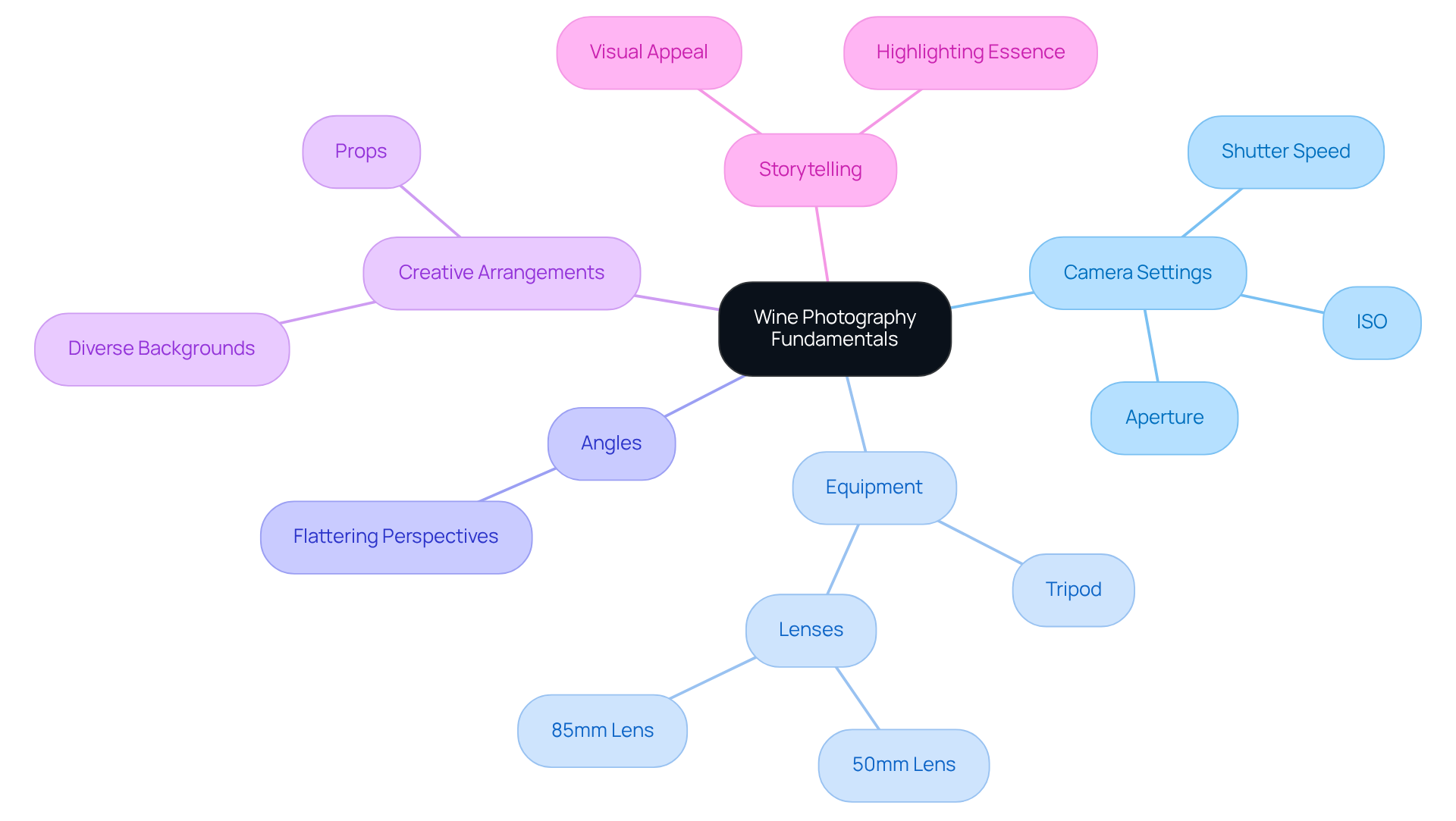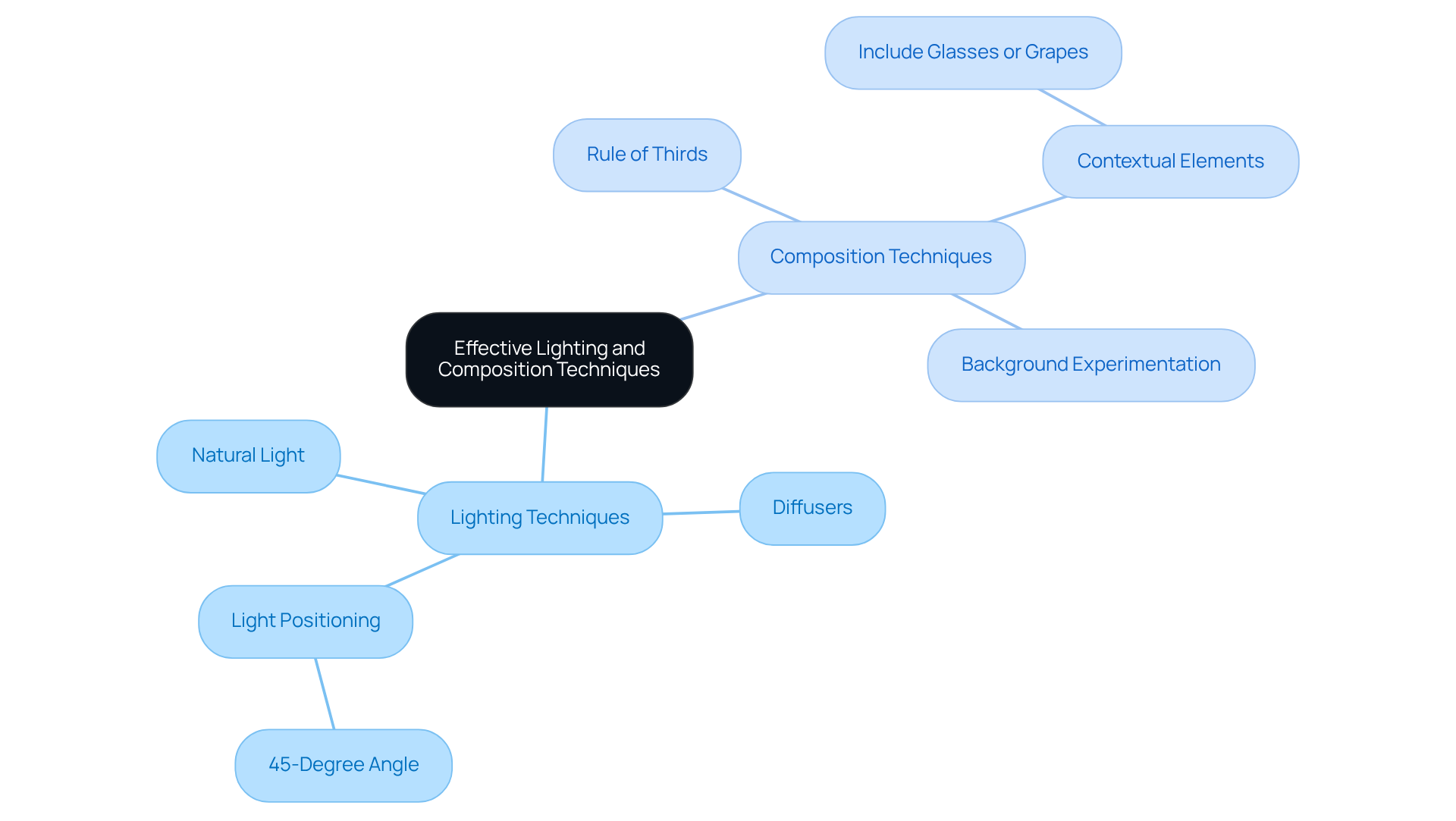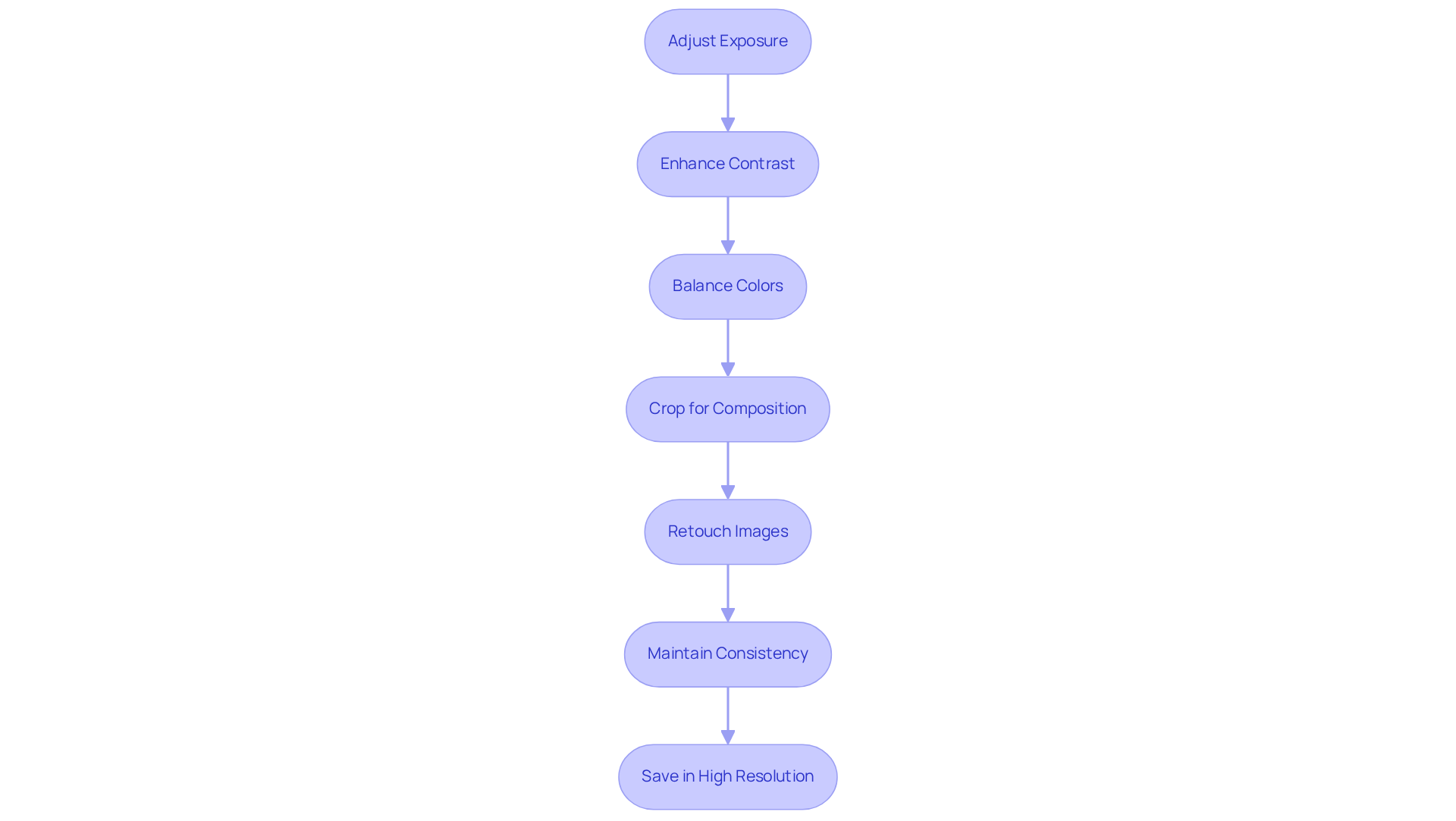Overview
This article delves into the mastery of creative wine photography, a crucial tool for enhancing brand storytelling. By employing effective techniques in camera settings, lighting, composition, and post-production, wine brands can significantly elevate their visual narrative.
Capturing the essence of the beverage through thoughtful angles and effective lighting is essential. Furthermore, integrating storytelling elements ultimately leads to the creation of compelling visuals that resonate with audiences and enhance brand identity.
The insights provided here will guide you in transforming your wine photography into a powerful storytelling medium.
Introduction
In an industry where visual appeal can make or break a brand, mastering the art of creative wine photography is essential for wineries aiming to captivate their audience. This article delves into foundational techniques—from camera settings to lighting and composition—that can transform ordinary images into striking visual narratives.
But how can wineries ensure their photography not only showcases their products but also tells a compelling story that resonates with consumers? By understanding and applying these techniques, wineries can elevate their visual storytelling and connect more deeply with their audience.
Master the Fundamentals of Wine Photography
To truly master beverage photography, one must begin with a solid foundation: understanding your camera settings, including aperture, shutter speed, and ISO. A tripod is essential for stabilizing your shots, effectively eliminating blurriness. Familiarize yourself with various lenses; a 50mm or 85mm lens is particularly well-suited for capturing intricate details of bottles.
Additionally, practice shooting from different angles to discover the most flattering perspectives for your subjects. The primary objective is to utilize to highlight the beverage's color, clarity, and label details, all of which are crucial for attracting potential customers.
Experimenting with diverse backgrounds and props will enable you to construct visually appealing arrangements that tell a compelling story about the beverage, highlighting the essence of creative wine photography.

Utilize Effective Lighting and Composition Techniques
Effective lighting is paramount in creative wine photography. Natural light is often the best choice; shooting during the 'golden hour' yields soft, warm tones that enhance the subject. When shooting indoors, employing diffusers can soften harsh light and mitigate unflattering shadows. Positioning your light source at a 45-degree angle to the subject generates depth and dimension, crucial for capturing the essence of the beverage.
For composition, applying the rule of thirds creates balanced images that draw the viewer's eye. Position the bottle off-center and include contextual elements such as glasses or grapes. This not only enriches the narrative but also elevates the visual appeal of the photograph. Experimenting with various backgrounds is essential; ensure they complement the beverage without diverting attention from it.
By following these guidelines, you can significantly enhance the quality of your creative wine photography, making your images not just visually appealing but also compelling to your audience.

Incorporate Storytelling to Enhance Brand Narrative
To effectively integrate storytelling into your creative wine photography, it is crucial to consider the narrative that aligns with your winery's and supports strategic capital planning. Reflect on the origins of the beverage, the winemaking process, or the experience of enjoying it—each aspect enriches your brand's identity.
Employ props that embody this identity, such as:
- Vineyard landscapes
- Winemakers
- Food pairings
to forge a visual connection with your audience. Capture candid moments of individuals savoring the beverage; these images evoke emotions and foster a sense of community, which is essential for transforming casual buyers into loyal club members. Each photograph in your creative wine photography must contribute to a cohesive narrative that resonates with your audience, fostering a connection to the brand and its story. Ultimately, this approach drives sustainable growth.
Leverage Post-Production Techniques for Polished Results
Post-production techniques are essential for elevating your wine photography to a professional standard. By utilizing software such as Adobe Lightroom or Photoshop, you can expertly adjust exposure, contrast, and color balance to achieve stunning results. Cropping your images can significantly enhance composition and eliminate distractions, drawing the viewer's attention to the wine itself. Additionally, employing retouching techniques allows you to remove dust spots or blemishes from the bottle, ensuring a pristine presentation.
For a cohesive visual identity, it is crucial to apply similar editing styles across all your images. This consistency not only aligns with your brand's aesthetic but also reinforces your professionalism in the industry. Finally, remember to save your images in high resolution for print and optimized formats for online use, guaranteeing they look exceptional across all platforms. By following these guidelines, you can create compelling visuals that captivate your audience and elevate your brand's presence in the competitive wine market.

Conclusion
Mastering creative wine photography is essential for brands aiming to elevate their storytelling and forge meaningful connections with consumers. By honing in on fundamental techniques—such as camera settings, effective lighting, and composition—photographers can craft compelling images that not only highlight the allure of the wine but also weave a captivating brand narrative.
This article has shared key insights, emphasizing the significance of experimenting with angles and backgrounds to discover the most flattering perspectives. The role of natural light in producing inviting visuals cannot be overstated, nor can the necessity of integrating storytelling elements that resonate with the audience. Furthermore, post-production techniques are underscored as crucial for achieving polished results that uphold a consistent brand identity across diverse platforms.
Ultimately, the art of creative wine photography transcends merely capturing beautiful images; it revolves around crafting a visual narrative that elevates the brand and cultivates a deeper connection with consumers. By embracing these techniques and insights, brands can harness photography as a powerful tool within their marketing strategy, ensuring their story distinguishes itself in the competitive wine industry.
Frequently Asked Questions
What are the key camera settings to understand for wine photography?
The key camera settings to understand for wine photography include aperture, shutter speed, and ISO.
Why is a tripod important in wine photography?
A tripod is essential for stabilizing your shots, which helps to effectively eliminate blurriness.
What type of lenses are recommended for capturing details in wine photography?
A 50mm or 85mm lens is particularly well-suited for capturing intricate details of wine bottles.
How can different angles affect wine photography?
Practicing shooting from different angles can help you discover the most flattering perspectives for your subjects.
What is the primary objective of creative wine photography?
The primary objective is to highlight the beverage's color, clarity, and label details, which are crucial for attracting potential customers.
How can backgrounds and props enhance wine photography?
Experimenting with diverse backgrounds and props enables you to construct visually appealing arrangements that tell a compelling story about the beverage.




